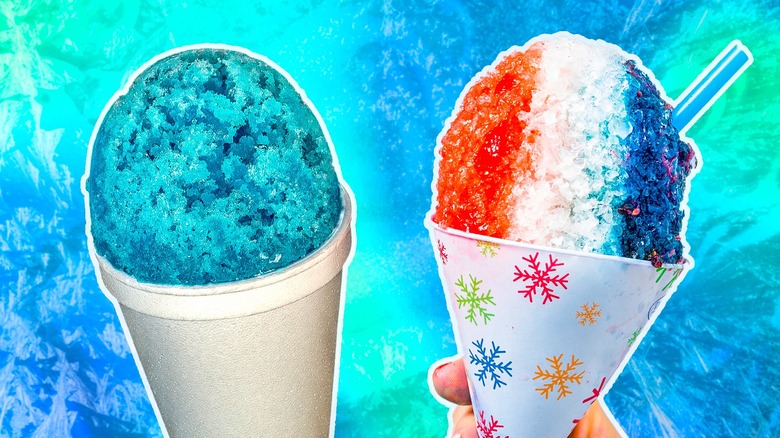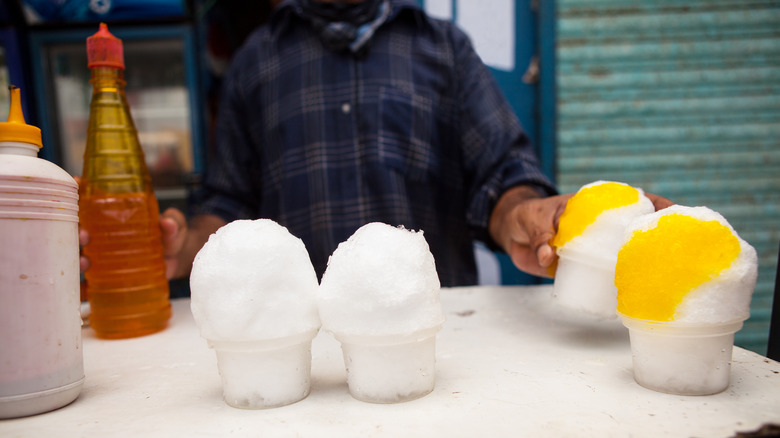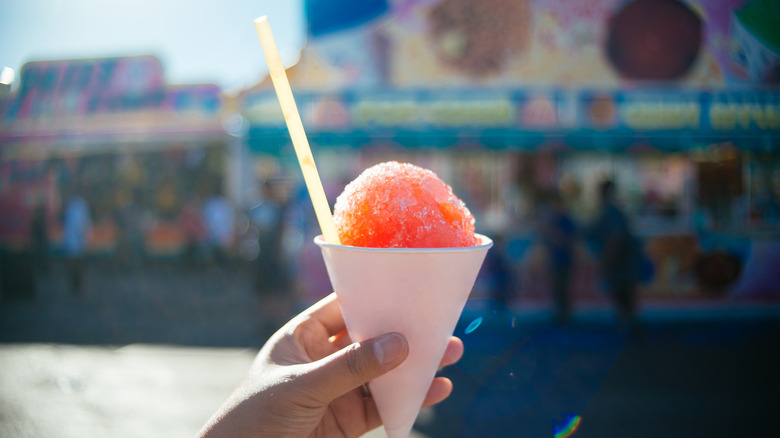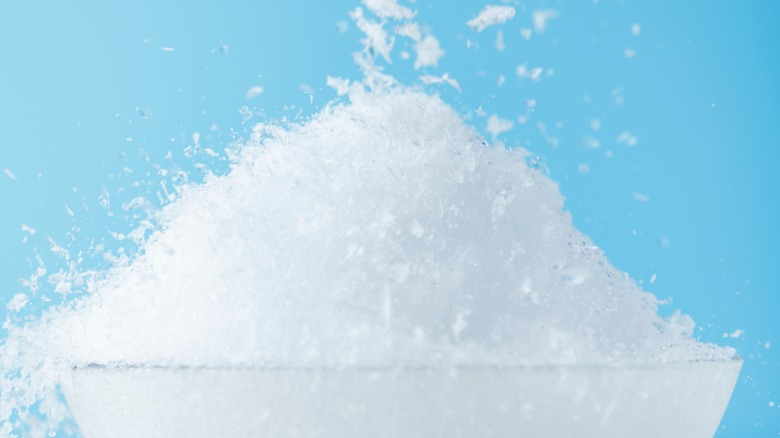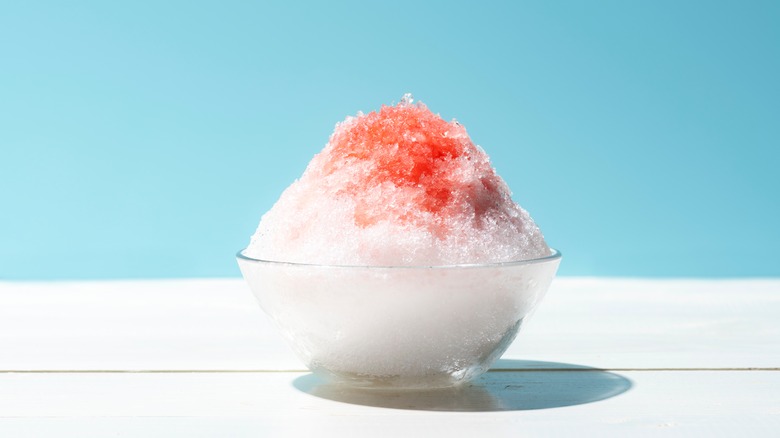Snowballs Vs Snow Cones: The Icy Difference Between These Frozen Treats
In the heat of summer, few things rival the icy allure of a frosty treat. Whether you grew up eating them at the fair or cooling off by the pool, these nostalgic treats are a distinct memory for many people. If you are not overly familiar with the delightfully icy duo of snowballs and snow cones, they may look identical. But these two frozen delights have been cooling down eager tongues for generations. What exactly sets the frozen indulgences apart?
Both snowballs and snow cones offer something unique, from their origins to their differences in syrup absorption. There are small characteristics that set each apart, but it all comes down to the type of ice used in each. Ultimately, the density of the ice and how it is prepared determines almost every other defining component of snowballs and snow cones. Let's take a closer glance at the frosty landscapes of the two snowy sweets.
What are snowballs?
Let's kick off our frosty adventure with snowballs, the beloved frozen treats that date back to the end of the 19th century in Baltimore, Maryland. At the time, vendors driving ice wagons would shave ice straight from the block by hand and flavor it with the most common flavor thanks to its simple ingredients, egg custard. Other popular flavors at the time included cherry and chocolate with marshmallow topping.
It wasn't until the 1930s that snowballs became popular in the heart of New Orleans. It was around this time that the first ice-shaving machines were invented in the sweltering Southern city. These delectable concoctions consist of finely shaved ice, meticulously packed into a cup, and drenched in your choice of a rainbow of flavored syrups. Today, the frozen treats come with a wide variety of colorful flavored syrups to choose from, including strawberry, cherry, blue raspberry, and more.
What are snow cones?
Now, let's turn our attention to snow cones, another icy delight that has captured the imagination of frosty treat enthusiasts. Unlike snowballs, which boast a velvety texture similar to fresh snow, snow cones are crafted from coarsely crushed ice – a distinction that sets them starkly apart.
It is commonly thought that the first snow cones were sold by Samuel Bert at the Texas State Fair in 1919. A year later in 1920, Bert invented an ice-crushing machine that revolutionized snow cones making them more widely available. So, while snowballs might have been served up first thanks to hand-shaved ice, snow cone machines appeared before mechanical snowball machines.
Over time, snow cones evolved into a summertime staple, beloved by children and adults alike for their icy refreshment and nostalgic charm. Whether enjoyed at a local fair, beachside shack, or neighborhood carnival, snow cones represent carefree summer days and sticky, sweet indulgence.
The type of ice makes all the difference
The primary distinction between snowballs and snow cones lies in the texture of the ice itself. Snowballs are crafted from finely shaved ice, and packed down into a cup, resulting in a smooth consistency that melts on the tongue like snow. Ultimately, this delicate texture has everything to do with how the flavored syrup settles throughout the ice. Better yet, it ensures that every bite is as delicious as the last.
In contrast, snow cones are made from coarsely crushed ice, which imparts a slightly chunkier and granular texture. While still refreshing, the rougher texture of crushed ice poses a unique sensory experience, with each icy morsel offering a satisfying crunch. However, this textural difference impacts how the syrup interacts with the ice. Let's dive into why the style of ice has such a decisive impact on the syrup-coated frozen sweets.
Snowballs absorb the syrup better
Snowballs and snow cones approach syrup absorption with two different principles. Thanks to their finely shaved ice, snowballs absorb and hold onto flavored syrups, ensuring a consistent burst of flavor with every spoonful. This absorption process allows the syrup to permeate through the layers of ice, creating a fusion of sweetness and chill.
On the other hand, snow cones, with their coarser texture, present a different syrupy scenario. Due to the larger surface area and air pockets present in crushed ice, flavored syrups tend to pool at the bottom of the cup, creating a reservoir of liquid sweetness. While this may result in an initial burst of flavor, it also means that the syrup must be stirred or consumed with a straw to fully enjoy its sugary goodness either after eating the ice or with every mouthful of crunchy cold.
One thing becomes abundantly clear: Despite their icy exterior, these frozen treats offer a warm embrace of nostalgia and summertime bliss. Whether you find yourself craving the smoothness of a snowball or the satisfying crunch of a snow cone, one thing remains certain — there's no better way to beat the heat than with a refreshing frozen delight.
